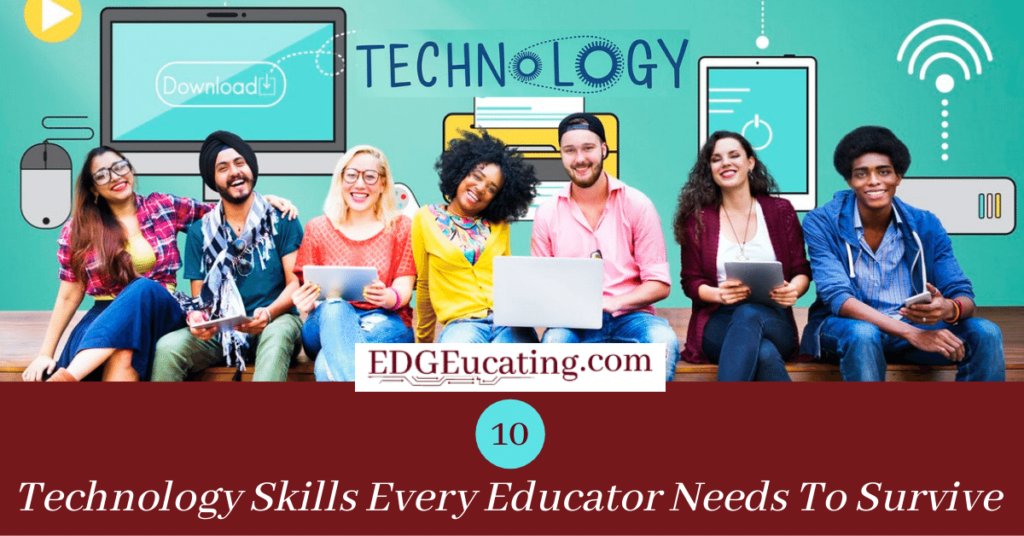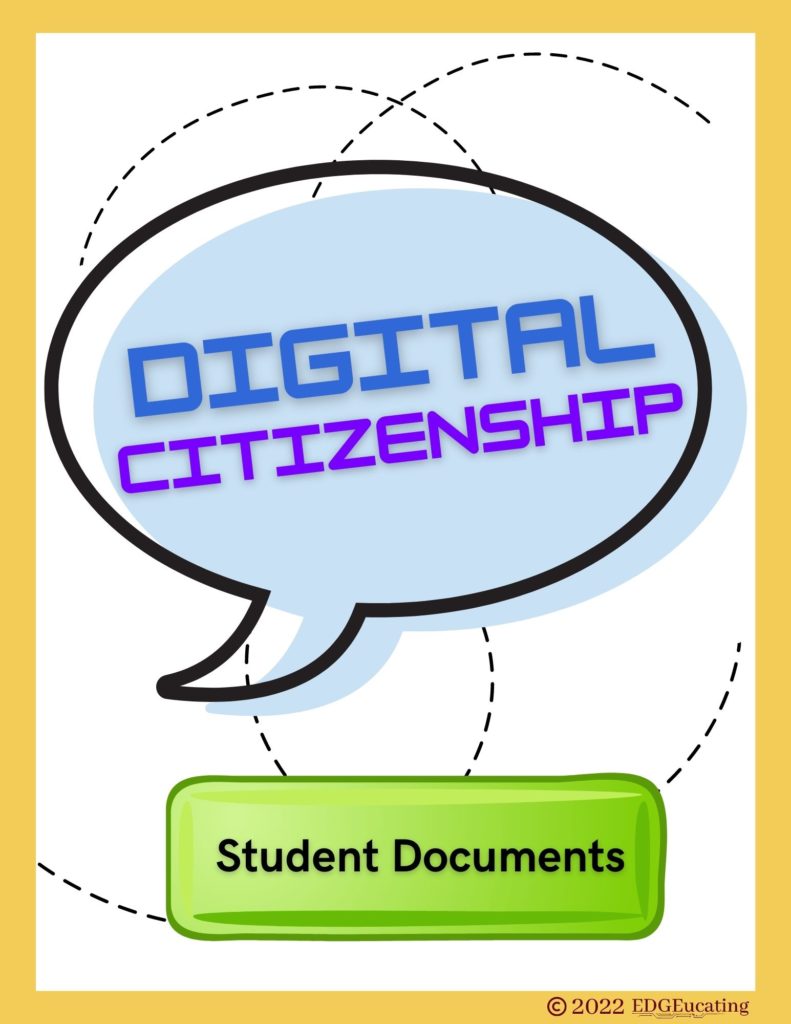Technology skills are required in the education industry – not optional!
According to Business Insider, “New technologies like AI, machine learning, and educational software aren’t just changing the field for students, they’re shaking up the role of educators, creating philosophical shifts in approaches to teaching, and remodeling the classroom.” As an educator, I can tell you that this is true! Educators must change with the times. As an industry, education is far behind the times. Which I find highly ironic, especially considering that the industry prepares future employees for every other industry. We need to meet our students where they already are and add value to their learning as it applies to today’s world.
Why Mastering EdTech & 21st Century Skills Matters
In today’s fast-paced digital world, technology isn’t just a classroom accessory—it’s a necessity. An article from trade-schools.net discusses the powerful technology movement that is sweeping through schools nationwide. “After all, today’s students have grown up with digital technology and expect it to be part of their learning experience. Proponents point out that educational technology offers the potential to engage students in more active learning, as evidenced in flipped classrooms. It can facilitate group collaboration and provide instant access to up-to-date resources. Educators must embrace evolving tools and platforms to remain effective and relevant. Mastering the right education technology and teaching strategies not only boosts classroom engagement but also builds critical 21st-century skills in students. Below are the ten must-have skills every educator should develop to create dynamic, inclusive, and future-ready learning environments.
So, let’s dive into what 21st century skills are necessary!
1. Basic Computer Literacy: Foundation for All Teaching Resources
What it is:
The ability to navigate essential digital tools, from word processors to cloud-based platforms.
Why it matters:
This is the foundation for implementing any education technology or digital classroom tool.
How to apply in your teaching strategies:
-
Use file-sharing platforms like Google Drive for collaborative projects.
-
Host digital scavenger hunts to familiarize students with tech tools.
-
Embed weekly tech tips into lessons.
2. Digital Communication Skills—Building Collaboration with EdTech
What it is:
The ability to effectively communicate through platforms like Zoom, email, or collaborative tools.
Why it matters for 21st century skills:
Digital communication builds teamwork, empathy, and digital literacy.
How to apply:
-
Assign peer review tasks using shared Google Docs.
-
Use Flipgrid or Padlet for student video reflections.
-
Hold virtual office hours for real-time support.
3. Online Research & Information Literacy
What it is:
Knowing how to find, evaluate, and use online information responsibly.
Why it matters:
Crucial for fostering independent learning and developing critical 21st-century skills like media literacy.
How to apply:
-
Teach students how to evaluate sources with credibility checklists.
-
Use inquiry-based learning projects to guide research.
-
Incorporate digital research journals into units.
4. Classroom Management Tools for Modern Teaching Strategies
What it is:
Using tech tools to streamline class operations and behavior management.
Why it matters:
Tools like ClassDojo and Google Classroom enhance communication and organization, key components of effective teaching strategies.
How to apply:
-
Set up daily agendas in Google Classroom.
-
Use real-time feedback tools to manage participation.
-
Create behavior tracking dashboards.
5. Understanding Cloud Storage & File Sharing
What it is:
Managing files and resources using platforms like Google Drive or Dropbox.
Why it matters:
Prepares students for digital collaboration and supports asynchronous learning.
How to apply:
-
Store and share all lesson plans digitally.
-
Encourage students to create digital portfolios.
-
Use version history for accountability and reflection.
6. Creating & Sharing Multimedia Content
What it is:
Using images, video, and audio to deliver instruction and demonstrate understanding.
Why it matters:
Multimedia enhances accessibility, engagement, and student creativity.
How to apply:
-
Replace traditional posters with Canva infographics.
-
Have students create podcasts or video essays.
-
Record lessons for flipped classroom models.
7. Data-Driven Instruction & Assessment
What it is:
Using tech tools to collect and analyze student data to inform instruction.
Why it matters for 21st century skills:
Encourages adaptability, personalization, and reflection in the learning process.
How to apply:
-
Use Google Forms for quick checks.
-
Create dashboards with Excel or Sheets.
-
Analyze quiz results to adjust pacing.
8. Cybersecurity & Digital Citizenship
What it is:
Promoting safe and ethical use of technology.
Why it matters:
Empowers students to use tech responsibly—one of the core 21st-century skills.
How to apply:
-
Host a monthly digital citizenship day.
-
Use scenarios to discuss online behavior.
-
Teach password safety and phishing awareness.
? Related Reading: Digital Citizenship and How to Teach It
EDGEucating has created student documents to assist you in your digital citizenship lessons. Click the image and download your Digital Citizenship Student Guide.
9. Learning Management Systems (LMS)
What it is:
Using platforms like Canvas or Schoology to manage curriculum and communication.
Why it matters:
Centralizes learning and supports differentiated instruction.
How to apply:
-
Organize all units and resources by module.
-
Enable parent portals for communication.
-
Integrate with assessment and grading tools.
10. Artificial Intelligence & Emerging Tools
What it is:
Understanding and leveraging AI tools like ChatGPT, Grammarly, and adaptive learning platforms.
Why it matters:
Prepares students for a tech-driven future while personalizing learning.
How to apply:
-
Use AI for brainstorming and feedback loops.
-
Encourage ethical discussions about AI use.
-
Pilot a new AI tool each month.
? Related Reading:
- 10 Essential AI Tools for Educators
- Teaching AI Made Easy: How To Safely Introduce Artificial Intelligence In Your Classroom
- From Dichotomous Keys to AI: A Modern Guide to Teaching Plant Classification in STEM Education
Embracing the Mindset Behind EdTech Integration
Teachers are often among the hardest to convince when it comes to adopting new education technology. The real challenge in most schools isn’t access to tools—it’s encouraging both educators and leadership to get on board.
Through my research and conversations with fellow educators, one theme came up repeatedly: the most vital “tech skills” aren’t tech skills at all. They’re human qualities—patience, curiosity, humor, and the drive to keep learning—that help make technology work in the classroom.
Think about it:
-
Patience is essential when the Wi-Fi fails mid-lesson or when your interactive whiteboard glitches.
-
Curiosity drives you to ask, “What if I tried this app with my class?”
-
Humor helps you recover from inevitable tech mishaps with grace.
-
And the drive to keep learning ensures you stay current in a constantly evolving digital world.
One of my favorite responses came from a veteran colleague when I asked, “What are the top 10 tech skills an educator needs?” She laughed and said, “That’s an article I need to read, not write!” Whether you’re new or seasoned, every educator faces hurdles with tech integration, but these are skills that grow over time.
Instead of reinventing the wheel, lean into the abundance of teaching resources and productivity tools available, especially platforms like Google for Education and Microsoft 365. Start with the basics: creating documents, sharing files, and navigating cloud storage. Use the Internet as a learning tool, and show your students how to do the same, teaching them smart search strategies instead of simply saying “just Google it.”
You don’t need to build computers from scratch, but knowing how to load a printer or troubleshoot simple tech issues can be incredibly empowering. More importantly, these are transferable 21st-century skills that both educators and students benefit from.
Remember, effective teaching strategies are rooted in continuous learning and collaboration. Work with your peers, explore new tools together, and share best practices. The more you engage with education technology, the more confident and innovative you’ll become.
Take it one step at a time.
I understand that a lot has been thrown at you, so I’m going to leave you with one thing. You can’t learn it all in one day. Take one thing from this article and focus on it. Once that becomes old hat, learn something new! Don’t feel like you have to become an expert; that’s what collaboration is for! Lean on your peers, don’t be afraid to learn, and keep being the best you that you can be!
Bringing It All Together: Next-Gen Teaching Strategies & Tools
Blending the right education technology, teaching resources, and teaching strategies empowers educators to equip students with crucial 21st-century skills. Whether it’s building a flipped classroom, launching a digital citizenship initiative, or integrating AI into your pedagogy, these skills are essential to thrive in the modern educational landscape.
Explore More Teaching Resources
Embracing these education technology skills empowers educators to create dynamic and inclusive learning environments. Explore our curated teaching resources to further enhance your teaching strategies and equip your students with vital 21st century skills.



